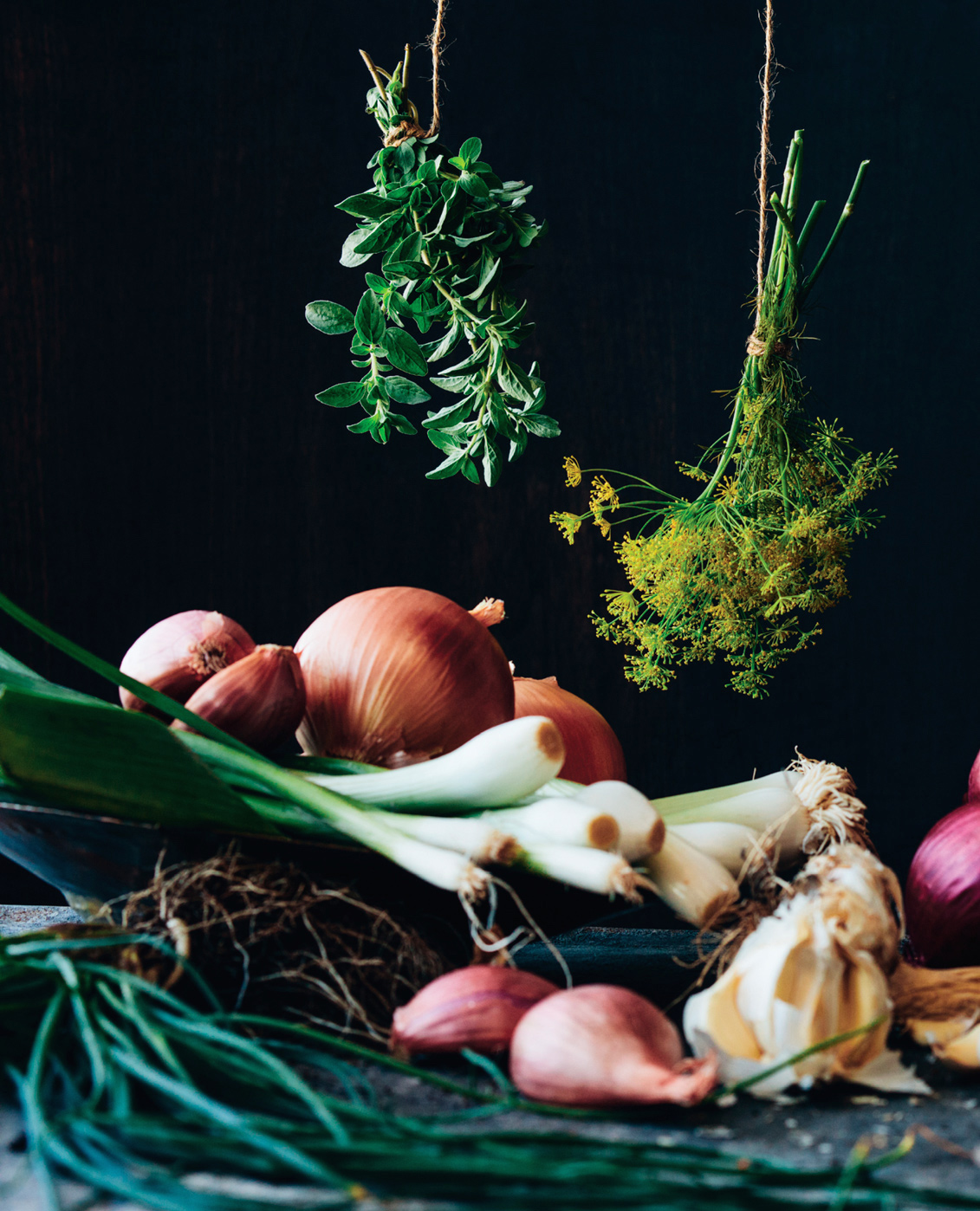
how to make any soup
In the “Common Elements” chart, I deconstruct soups and show just how easy they are to make. You don’t even need a recipe! All soups tend to have common elements: fat, aromatics, dried herbs and spices, deglazing liquid, main ingredients, broth, and finishers. Once you recognize the role each ingredient plays in a soup, you’re on your way to freeing up your creativity, and you’ll soon see a recipe as a guideline instead of something that must be strictly followed to the letter.
common elements
|
element |
example |
method |
|
Fat |
Olive oil, ghee, coconut oil |
Heat the pot before adding the fat. |
|
Aromatics* |
Onions, carrots, celery, fennel |
Sauté until softened or caramelized, from 3 to 15 minutes. |
|
Dried herbs and spices* |
Cumin, red pepper flakes, and even fresh garlic |
Sauté for less than 1 minute. |
|
Deglazing liquid |
½ cup of broth or other liquid, such as wine or tamari |
Simmer until reduced by half. |
|
Main ingredients* |
Vegetables, legumes, meat |
Stir in to coat with the seasonings. |
|
Broth |
Broth or stock of choice |
Bring to a boil, then simmer until the ingredients are soft enough to puree, cooked through, or at the desired tenderness. |
|
Finishers |
Salt, acid, garnishes, toppers |
Taste, FASS (see “FASS”), then garnish and serve. |
* Add a generous pinch of sea salt at these steps. Adding the salt throughout the cooking process allows it to penetrate into the vegetables, helping them release an abundant amount of flavor into your soup.
FASS = Fat + Acid + Salt + Sweet = YUM!
Soup-making is all about tasting throughout the cooking process, and FASS—which stands for fat, acid, salt, and sweet—is my easy tool for course-correcting soups as you taste them. If you’ve ever wondered how cooks elevate soups into the land of absolute yum, take a few minutes to learn all about FASS. It’s time very well spent.
FASS
|
element |
what it does |
examples |
|
Fat |
Distributes flavor across the palate. Makes you feel satiated. Unlocks all of the fat-soluble vitamins that are in many vegetables so you can better absorb them. |
Extra-virgin olive oil Coconut milk Ghee |
|
Acid |
Draws out and brightens flavors. Aside from providing a little punch, it will help balance a soup that is too sweet or salty. Increases absorption of minerals and stimulates digestion. |
Lemon juice Lime juice Vinegar |
|
Salt |
Brings out the flavor of foods. Moves flavor to the front of the tongue, where it’s best perceived. Improves appetite and balances the ratio of potassium, essential for energy and cellular metabolism. |
Sea salt Tamari Fish sauce |
|
Sweet |
Tames harsh, sour, bitter, and spicy flavors. Rounds out or harmonizes flavors. Increases the desire to eat and the sense of pleasure. |
Maple syrup* Coconut palm sugar Sweet potatoes |
* The labeling for maple syrup is changing. The former Grade B (old system) is becoming Grade A: Dark Color & Robust Flavor. You want the darker syrup, which is harvested later in the season. It has a more concentrated flavor and is sweeter, so less is needed.

BUILDING AN INVENTORY FOR EVERYDAY EATING
Having a stash of broths in the freezer will help get soup into your menu rotation. In a pinch, frozen broth can become a satisfying soup in less than thirty minutes.
For example, if you make one broth every other week, for most of the broths that’s six quarts or twenty-four cups, which could suffice for up to four soups. You can eat some and freeze some, creating your own little market right inside your freezer. If you’re feeding a large family, double each recipe. This allows you to build an inventory of broths and soups that will help with your meal planning. When it comes to making broths, don’t feel beholden to the stove top. Instead, try an electric pressure cooker, which speeds up the process, or a slow cooker, which you can turn on and forget about. If you establish a broth-making habit, you’ll have plenty of opportunities to make a variety of soups.
